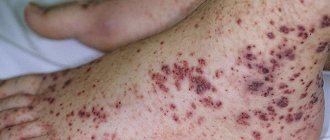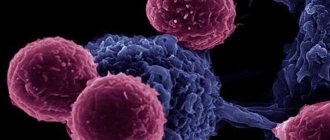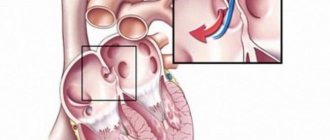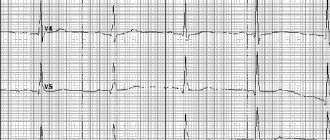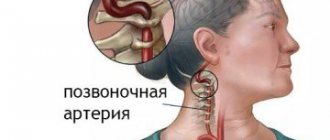Classification
The classification of capillaritis is based on etiology, clinical features of individual forms, pathogenetic, histological differences.
- Depending on the location and depth of damage to the vessel wall, endovasculitis, mesovasculitis, perivasculitis, and panvasculitis are distinguished.
- Based on the nature of the inflammatory reaction, destructive, productive and destructive-productive forms are distinguished.
- Capillaritis can be localized when an infectious agent enters the vessel wall and generalized during systemic processes.
How to diet for vasculitis
Regardless of the specific type of vasculitis, the patient is strongly recommended to adhere to a specific nutrition and diet algorithm. It is necessary to eat six times a day, chewing food with maximum care.
fermented milk products are the basis of the diet
The diet should always contain vitamin components such as B, C, K and A. It is strongly recommended to limit the use of table salt as much as possible, so the daily intake should be no more than eight grams.
It should also be taken into account that with vasculitis, significant amounts of calcium are washed out. That is why, to eliminate negative symptoms and compensate for its deficiency, it is strongly recommended to use fermented milk products with a sufficiently low percentage of fat content.
Treatment with such a diet may include cream, cottage cheese, yogurt, and even sour cream.
Please note that:
- during the treatment process, the patient may well encounter potassium deficiency in the body;
- In order to nourish the human body with potassium, it is very important to consume any variety of dried fruits. The use of dried apricots, prunes and raisins is especially encouraged;
- if the patient has renal failure, then potassium products are contraindicated for him;
- For vasculitis, vegetables that have been steamed or boiled are recommended for consumption. It is also acceptable to use them as purees or steam puddings;
- soups, but exclusively pureed or milk-based. It is not recommended to puree the only soup that was cooked with cabbage.
In addition, the diet of a patient with vasculitis may include milk porridge or regular porridge with vegetable and butter. We should not forget about boiled meat and low-fat fish. In particular, it would be best to consume poultry without any skin.
Etiology, causes
Many factors, acting individually or in combination on the body, can trigger the onset of vascular inflammation:
- genetic predisposition;
- hormonal imbalance;
- bacterial, viral, parasitic or fungal infections;
- rheumatic, systemic diseases;
- vaccinations;
- chemotherapy;
- prolonged contact with toxic chemicals: petroleum products, insecticides;
- environmental influences: hypothermia, overheating;
- allergic reaction to certain medications: sulfonamides, barbiturates, anti-tuberculosis drugs;
- tumors;
- radiation injury, radiation therapy.
The occurrence of the disease is more likely in the additional presence of predisposing factors:
- temporary or chronic decrease in immunity;
- metabolic disorders: diabetes mellitus, atherosclerosis;
- age: children or elderly;
- significant mental stress;
- tendency to allergic reactions.
Elements of pathogenesis
Regardless of the variety of clinical manifestations, the morphogenesis of most capillaritis is similar and is associated with a violation of immune homeostasis.
The essence of the process is the appearance of antigen-antibody complexes in the bloodstream and their fixation on the inner surface of the vessels. Damage to endothelial cells attracts neutrophils to the site and triggers the intravascular coagulation reaction. Fibrin, plasma components, and formed elements, penetrating into the deep structures of the capillary wall, cause its swelling, increased permeability, and then destruction and necrosis. The productive stage is associated with the proliferation of endothelial cells, pericytes, and infiltration of mononuclear cells.
Consecutive phases of vasculitis: exudative, destructive, proliferative - determine the clinical manifestations. Against the background of thrombosis in the vessels, the blood flow in them slows down or stops, the nutrition of tissues, structures, and organs is disrupted. The functioning of organs suffers.
Ulcerative-necrotizing vasculitis
Ulcerative-necrotizing vasculitis refers to a pathology of the immune system, which leads to necrosis of the skin in small areas. Speaking about this disease, it should be borne in mind that:
- The cause of the disease is associated with inflammation in the area of the capillary walls;
- This gradually leads to the formation of blood clots in the area of the arterioles, as well as the capillary network. All this does not allow the area of the skin to be adequately supplied with blood;
- In this case, as the number of platelets in the blood decreases, capillary fragility will form;
- As a result of this, on any area of the skin due to squeezing or pinching, the formation of a blood smudge and a small hematoma is identified. Livedo-vasculitis
Livedo-vasculitis is a pathological condition that is provoked simultaneously by vasculitis and thrombosis in the area of small vessels. Characteristic is the combination of hemorrhagic rash and livedo (bruises) with painful ulcerative lesions of the lower skin. The ulcers will heal rather slowly, leaving behind rather large white scars of disproportionate shape.
The photo shows livedo vasculitis on the legs
In the vast majority of cases, an idiopathic type of the disease, allergic reactions, is identified. In addition, livedovasculitis is diagnosed in antiphospholipid syndrome and systemic scleroderma. Features of treatment
Treatment of vasculitis in any case is selected exclusively for a specific patient.
The fact is that it will largely depend on the type of damage to the blood vessels, the specific location of the pathological condition and the degree of prevalence of the disease. Treatment is mandatory, and the following goals must be pursued:
- Prevention of irreversible damage associated with internal organs.
- Achieving remission.
- Reducing the likelihood of developing all kinds of complications.
- Increasing the life expectancy of each specific patient.
To ensure adequate treatment of vasculitis, various medications are used, which may well suppress the production of antibodies by the human body. In addition, they are the ones who make tissues less susceptible. For such purposes, patients are prescribed cytostatics and glucocorticoids, because they suppress the production of antibodies, as well as the proliferation of cells. Excellent results can be achieved through the implementation of treatment methods such as hemosorption or, for example, plasmapheresis.
In case of mild types of vasculitis or identification of the patient in stages of remission, non-steroidal anti-inflammatory components (for example, Indomethacin or Voltaren) can be prescribed. Additionally, items that prevent the formation of blood clots and also reduce the permeability of blood vessel walls are added to the treatment process.
Symptoms of capillaritis
Clinical manifestations of capillaritis are polymorphic and are associated with the region of vascular damage. Various organs and systems can be involved in the pathological process, this determines the forms of the disease: skin, skin-articular, skin-renal, skin-abdominal, mixed.
The rash with capillaritis has characteristic features:
- symmetry of rashes;
- primary manifestations are more often on the extremities;
- inflammatory nature of the elements;
- tendency to edema, necrosis of surrounding tissues;
- evolutionary polymorphism of the rash, the possibility of the simultaneous presence of macules, papules, vesicles, telangiectasia, pustules, and areas of necrosis on the skin.
Capillaritis, which occurs predominantly in the cutaneous form, includes Schamberg's disease, Gougerot-Blum pigmentary dermatosis, hemosiderosis of the skin, eczema-like Doukas-Kapetanakis purpura, ring-shaped telangiectatic purpura, atrophic obliterating capillaritis, microscopic polyangiitis.
The appearance of other symptoms is associated with damage to internal organs and systems.
- Joint pain, swelling, hyperemia and stiffness may occur.
- Pain in the abdomen, lower back, urination problems, changes in the amount and color of urine excreted are characteristic of kidney disease.
- If there are elements of vasculitis in the cardiac vessels, pain in the heart area, rhythm disturbances, tachycardia, shortness of breath, and instability of blood pressure are disturbing.
- Dyspeptic symptoms, disturbances of appetite, stool, abdominal pain, weight loss, ulceration of the oral mucosa appear when the gastrointestinal tract is damaged.
- Capillatitis of the respiratory tract organs is characterized by the appearance of a runny nose, cough, pain in the ear and throat, and is complicated by pneumonia and pleurisy.
Behind each diagnosis of capillaritis there is a symptom complex that can be realized in whole or in part.
- Wegener's granulomatosis affects the respiratory system.
- Hemorrhagic vasculitis is characterized by severe damage to the skin, joints, kidneys, and digestive organs.
- Churg-Strauss syndrome affects the skin, respiratory system, heart, central and peripheral nervous system.
- Goodpasture syndrome is characterized by dysfunction of the lungs and kidneys.
How does it appear on the legs?
Most often, vasculitis manifests itself in the lower leg area. The elements of the rash in this case are subcutaneous nodular formations on the legs. At the initial stage they are red, after which they acquire a bluish tint, as well as a high degree of pain and density. New growths are placed in groups; after disintegration, long-term non-healing ulcerative lesions with uneven edges and a purple rim around are formed. After successful treatment and healing, scars can be identified.
Diagnostics
The diagnosis is made based on complaints, a carefully collected medical history, objective examination data, laboratory and instrumental examinations.
Laboratory tests include:
- clinical blood test - reveals an increase in ESR, leukocyte count, a shift in the formula to the left;
- coagulogram - will show inhibition of fibrinolysis, acceleration of platelet aggregation, the presence of dimers, increased fibrinogen;
- the presence of CRP confirms inflammation;
- biochemical blood test - will show dysproteinemia, laboratory complexes in case of disruption of internal organs;
- determination of the quantity, ratio of immunoglobulins M, E, G, circulating immune complexes, antineutrophil antibodies to determine the nature of the process;
- A general urine test will record the appearance of red blood cells, protein, and casts.
If necessary, chest radiography, MRI, additional histological, serological, and instrumental examinations are prescribed.
Differential diagnosis is carried out with skin, infectious, somatic diseases with similar symptoms.
Treatment
Therapy for capillaritis is complex; for each diagnosis, in each specific case, it is selected individually by the attending physician.
- To suppress inflammation, glucocorticoids, cytostatics, and nonsteroidal anti-inflammatory drugs are prescribed.
- By prescribing anticoagulants and antiplatelet agents, hemostasis is corrected.
- Hemosorption, immunoglobulins, and plasmapheresis are prescribed to free the blood from the antigen.
- Symptomatic remedies vary depending on the form of the disease.
- Physiotherapy means used: UHF, diathermy, inductothermy, ultrasound, ultraviolet radiation.
- Treatment of the skin is carried out by prescribing solutions of aniline dyes, drying, epithelizing agents, and hormonal ointments.
Among folk remedies, infusions of plants with anti-inflammatory, immunomodulatory, antiallergic properties that affect hemostasis can be used as prescribed by a doctor: calendula, yarrow, elderberry, nettle, violet, knotweed, mint, lingonberry.
The prognosis depends on the form of the disease, the severity of the course, and the timeliness of starting treatment.
What is capillaritis
Skin capillaritis, in the vast majority of cases, is a chronic condition. It can be expressed in hemosiderosis, as well as purpuric pigmentary dermatosis. At its base there is damage to the capillaries of the skin with the deposition of iron-containing pigment, namely hemosiderin, in the surrounding tissue. The condition traditionally lasts for quite a long time and is of good quality. At the same time, it is characterized by resistance – a low degree of susceptibility – to therapy.
